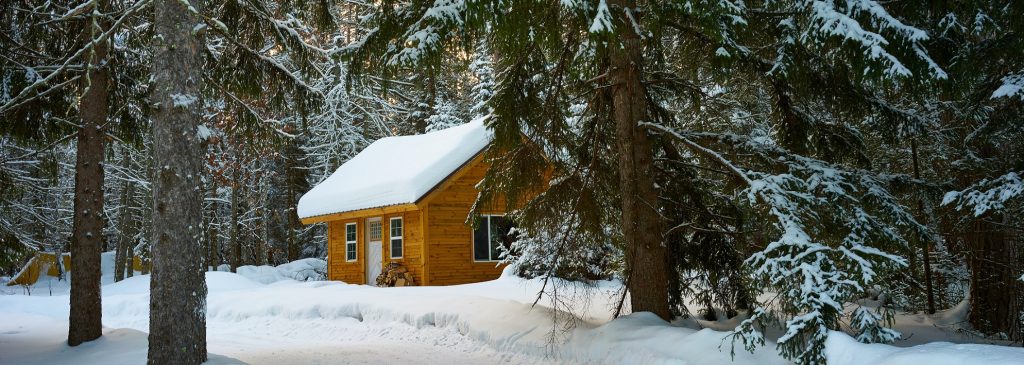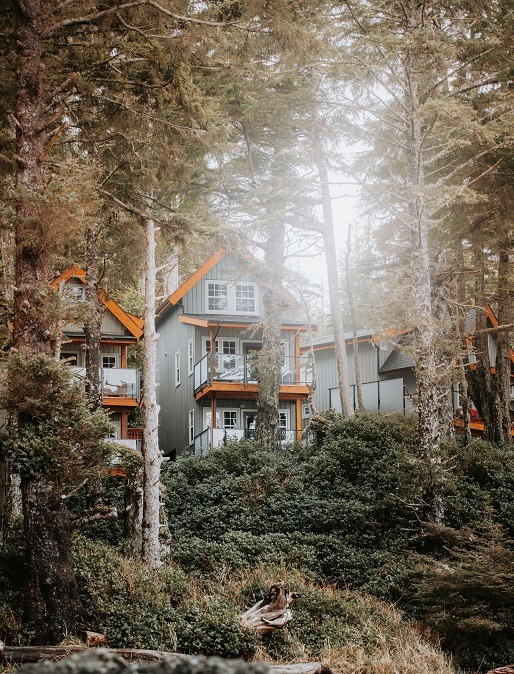
Recently, Redfin has been sounding the alarm about a particular real estate trend. People are building in dry areas with high fire risk. This is happening in a decade that’s seen unprecedented losses to fire.
The Wildland Urban Interface (WUI) — where builders are active in and near natural lands — is now the fastest growing land-use type.
Many people are buying homes where climate-related risks are undeniable. Yet they might have no idea. Maybe they’re finding the combination of remote work and new listings as reason enough to head ever further into suburbia. In any case, tens of millions of new homes have popped up out there. Due diligence is imperative for any home buyer moving into these areas.
Where Are the Hot Spots?
Pacific Northwest summers are heating up — and drying out. Fire-prone conditions also affect the U.S. South, Idaho and Wisconsin, as well as Minnesota, Arizona, Florida, and large patches of the Southeast, such as Georgia, Tennessee, Florida, and even D.C.
Risks are high too in Nevada and Colorado, and in Texas and Montana.
In fact, one in three U.S. homes are now built in and around heavy natural vegetation. California and Texas have the most homes in the Wildland Urban Interface, and this land type keeps expanding in Colorado. Fires are also becoming more devastating. In Greater Boulder, the 2021 Marshall Fire was the most damaging in Colorado’s history, impacting more than a thousand households.
As climate risks swell and as developers carve into natural land, Redfin notes, most homes built so far this decade actually face fire risk. Contrast this with just 14% of homes built in the first six decades of the 20th century.
Now let’s look at Colorado, where 91% of the residential developments of this decade to date are subject to fire risk. Redfin contrasts this extremely high number with the 23% figure for homes constructed in the 1900 – 1959 period. New construction in Arizona has a startling 97% fire risk. Then note Oklahoma’s 96%, and Arkansas’s 94%. Wyoming and Montana tie at 93%. In Utah, the figure is 85%. Even in Florida, more than half of the new residential developments face fire risk.
And that’s not all. These numbers could be obsolete in the coming summer season. That’s because people unknowingly raise the fire risk stakes as they arrive. As more people buy, more fuel gets burned. More electric equipment gets installed. Plus, newcomers lack place-specific risk mitigation knowledge.
Drought Is a Parallel Concern

Texas, Arizona, California and the Mid-Atlantic and Northeastern region too, are all dealing with serious heatwaves and extended low-rainfall periods, year after year. Wherever a new development is built (rather than development in existing urban areas), new infrastructure becomes necessary. And development increases water use.
Redfin points to Arizona, where three out of four of new homes crop up on drought-prone land. Contrast that percentage with just 41% of the Arizona homes constructed in the 1900 – 1959 period.
Pennsylvania takes second place for percentages of homes built into drought risks: 56% now; 28% in 1900 – 1959. Of course, this heightens fire risk. Overall, as Pennsylvania’s Bureau of Forestry observes, the United States actually experiences more wildfires east of the Mississippi than to the west.
Nevada is so dry that it is now in the process of banishing grass lawns. Utah’s burgeoning population is depleting the Great Salt Lake. Nearby, in Herriman, Utah, a 2010 fire raged across 4,000 acres, after the National Guard carried out a machine-gun exercise on a dry, windy day. But often the matter is much less dramatic. Burning a heap of leaves or shooting off fireworks can start fires that spread quickly through dry shrubs and into woodlands.
How Loss, Damage, and Coverage Gets Allocated
Home buyers share risks with mortgage companies. Both have a stake in the real estate asset. For this very reason, the mortgage company uses escrow accounts to be sure a homeowner’s insurance policy is current.
Some two-thirds of homes that catch fire are underinsured, reports United Policyholders. Not only fire but also drought can negatively impact home values in areas where residents must evacuate.
A mere four states are limiting homebuilding near high-risk natural interfaces. And National Public Radio has called out fire-prone states for neglecting to make landlords and sellers disclose the fire risks.
California, as you might expect, is one of the states that insist on disclosures to renters and home buyers. As we noted in 2021, California has bolstered its wildfire risk mitigation and disclosure law. The reason? Yes, it’s the rising amount of damages left behind by fires in wildfire country.
Oregon’s standard seller disclosure form does ask the seller to tell the buyer if the real estate has a Forestland Urban Interface. As with Wildland Urban Interface, that term refers to known wildfire risks.
Select a homeowner’s insurance policy with care. A normal homeowner’s insurance policy covers wildfires, says Washington State’s Insurance Commissioner. It should cover any fire at all (as long as it doesn’t involve arson by the policyholder).
Finally, a reminder that a homeowner’s insurance policy is distinct from title insurance. Your title policy shields your ownership rights from liens and other surprise claims against your real estate title.
☛ Read more information about standard and extended title insurance from Deeds.com.
A Tool You Can Use
Redfin’s climate-risk data for heat, fire, and drought, as well as storm and flood damage, comes from ClimateCheck. You can use the ClimateCheck tool yourself, to compare risks in various cities and towns where you might be shopping for a home. As a rule, if you have wooded landscapes, you have fire risk.
Accidentally ignited wildfires leave scorched earth in wooded places, and put life at risk. A single wildfire can take out thousands of acres of natural vegetation. (Generally, cutting them down will not prevent out-of-control fires!)
Climate-related damage risk is a key issue to spot before any of us determine where to buy or build. Know the facts. Keep everyone safer.
Supporting References
Catherine Clifford for CNBC.com, part of NBCUniversal: Americans Are Flocking to Wildfire Country (Dec. 9, 2022; citing a study carried out at the University of Vermont).
Lily Katz and Taylor Marr for Redfin.com: America Is Increasingly Building Homes in Disaster-Prone Areas (Sep. 9, 2022).
Lily Katz and Sebastian Sandoval-Olascoaga for Redfin.com: More People Are Moving In Than Out of Places Experiencing Intense Drought (Aug. 31, 2022; citing data from the U.S. Drought Monitor).
Lily Katz and Bokhari Sheharyar for Redfin.com: Homes With High Fire Risk Sell For Nearly $120,000 More Than Low-Risk Homes As Americans Flock to Fire-Prone Suburbia (Jun. 6, 2022).
REALTOR® Magazine Real Estate News: Law and Ethics – Rebuilding Costs May Exceed Colorado Fire Victims’ Insurance (Jan. 12, 2022).
Office of the Insurance Commissioner, Washington State: Wildfires and Homeowner Insurance.
California Department of Forestry and Fire Protection (CalFire): Wildfire Is Coming… Are You Ready?
Cheri Carlson for the Ventura County [California] Star: New Real Estate Disclosure Spurs Owners to Protect Homes Against Wildfire (updated Jul. 30, 2021).
Deeds.com: Buyer Be Told: More Wildfire Risks for Homes in California – And Beyond (Aug. 18, 2021; internal citations omitted).
And as linked. Photo credits: Adriaan Greyling and Luke Miller, via Pexels.
